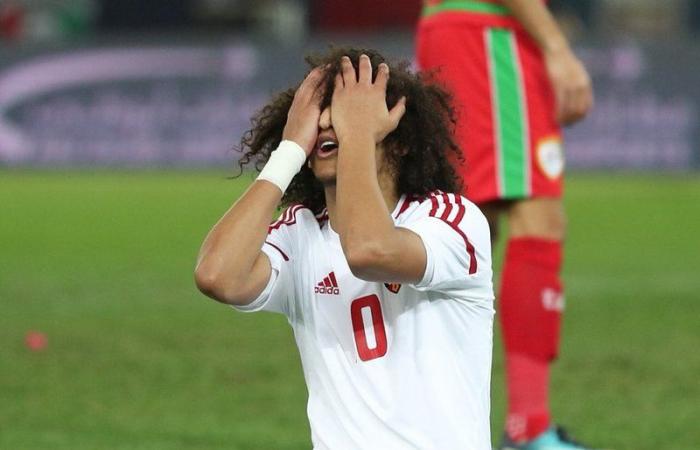The twenty third edition of the Arabian Gulf Cup was concluded last Friday in Kuwait in a dramatic and quite a surprising finish. The tiny and modest national team of Oman, have won the tournament after a thrilling penalty shootout with the UAE.
The tournament, which its existence was under a huge doubt due to the political tension in the Gulf, enclaved so many stories and confrontations that it could have fill a book.
It started way back in 2015, when Kuwait got suspended from FIFA for governmental intervention in its football association. FIFA decided to ban the country from its competition for undisclosed time and so, the tournament ‘looked’ for a new home.
Qatar saw the situation as a great opportunity to have a first rehearsal for the 2022 World Cup that will take place in the country, and took the responsibility to host it. Back then, nobody knew what would be the regional climate in 2017. The Qatari FA aspired to show the world its football hosting capabilities, amid the rumors and reports which criticized the workers’ conditions in the stadiums’ construction sites, as well as the ethical measures of the World Cup bid the country has applied for and won.
A successful tournament, ambivalent consequences. Infantino in Kuwait (Albawaba Sport)
Gulf Crisis in Football
In June 5th 2017 the Gulf Crisis erupted. Saudi Arabia, the UAE, Bahrain and Yemen, all caught their ties with Qatar in one day. Everything was changing and things seemed none-stable. FIFA has released a statement regarding the World Cup, and the Gulf Cup that was planned to take place few months later in the country was seen as a none-issue. As time went by and the tournament kick-off date got closer, it was clear that the current stand of the Saudis and their affiliates won’t put politics aside in favor of football.
As expected, the resign message of all four has arrived three weeks before the tournament’s opening date. But then, FIFA decided to intervene. A supervising delegation have landed in Kuwait, and with around two weeks to the first match, declared that Kuwait is eligible for hosting the tournament, and that the international ban on the country’s football is over. Out of the blue, the 2017 Arabian Gulf Cup have completed a circle, and landed back in Kuwait, in order to have all the gulf countries on the pitch.
The national teams were organized in to two groups of four teams, with Saudi Arabia, UAE, Kuwait and Oman in Group A, while Iraq, Qatar, Yemen and Bahrain in group B.
FIFA President Gianni Infantino was present in the opening ceremony, but it did not assure the peaceful intentions his organization planned to implement in the event. The Emirati and Saudi delegations has refused to participate in the main press conference before the tournament, due to the presence of Qatari media microphones in the room. This behavior has been regarded as childish by many in the Arab football world and FIFA as well. After this unpleasant gesture was dismissed from the agenda, finally it was time for football.
Playing for Not Playing Each Other
From the first match it was clear that Saudi Arabia, who sent their strengthened ‘B’ squad, has a great quality compare to its rivals. After gaining victory against the host in the opening game, the Saudis did almost everything in order to skip a meeting with their rival – Qatar, who were also off to a flying start with a hammering victory over the poor Yemen. While the Saudis tied with the UAE and lost surprisingly to Oman, Qatar did the same with a loss against Iraq and a tie with Bahrain. One of the main highlights in the last match was the handshakes the Bahraini players gave their Qatari counterparts, in what was a true moment of sportsmanship, which shows that even in a tense environment as the Gulf atmosphere, football is the place to put things aside. The early exits of the two giants of the GCC football, and political rivals too at the moment, have paved the way for other fascinating stories to pop up out of Kuwait. And for a change, there were stories about football. Well, almost.
"Let's not lie to ourselves". Yemen's Alaa Al-Sasi, wth the sad truth (Getty Images©)
Yemeni achievement
"Let’s not lie to ourselves. It’s impossible to produce anything with the conditions we're living in. We have no sports, for three years there has been no football inside the country”, said Alaa Al-Sasi from the Yemini National Team, on his country's participation in the tournament. Yemen finished the competition with three straight losses, but regarding the situation in the country – a horrific civil war, continuous interventionism by its neighbors, cholera and famine - the team’s real achievement was the actual participation itself.
Iraqi Heartbreak
Though, not everything was pessimistic in the Gulf Cup. Iraq played attractive football, displayed a talented and young squad and unveiled the stars of tomorrow – Hussein Ali (who won three man of the match awards in the competition), Ali Faez and Ali Husni – all have put up preforms as they were experienced players. After the early exit of Saudi Arabia and Qatar, it seemed that Iraq had a real chance for a first title since the West Asian Games of 2005. It wasn’t enough as Iraq lost to the UAE on penalties in the semifinal, and the war-torn country was left heartbroken, with another disappointment in another important moment for the Lions of Mesopotamia.
A Tragedy called Amoory, Oman’s joy and a Glass Fence
Iraq’s loss has set the stage for the Gulf football biggest star, Omar ‘Amoory’ Abdulrahman and his magical UAE generation with Ahmed Khalil and Ali Mabkhout. But it seems that the ‘Arab Messi’ is collapsing under the pressure while at his national team, in a very similar way to real Lionel Messi.
The signs weren’t good already in the semifinal as instead of the UAE anthem, Oman’s one was played. In the final it was already Amoory’s fault, as the UAE won a penalty in the 91st minute while the teams were in a 0-0 tie, but the star have kicked it weakly to the middle of the goal and the game went into overtime and penalties. Amoory missed again, in the decisive final shot, and Mohsin Al-Khaldi from the modest and tiny football nation of Oman scored with style and won the cup for his country.
Oman celebrated with pure joy, as titles doesn’t come easy or often for them - it’s Oman’s only title since the 2009 Gulf Cup triumph. After all the political and media sagas, eventually the winners were those who spoke the least. After their return from Kuwait, Sultan Qaboos bin Said, the ruler of Oman, rewarded the players with cash and plots of land in appreciation for winning the cup.
The 'Arab Messi' but not in the good manner of it. Amoory after missing one of the two penalties vs Oman in the Gulf Cup final (Al-Wast)
At last, a good word must to go to Kuwait. The hosts have setup a great tournament, in no-time. Two weeks announcement for the preparations are basically nothing, especially with all the tension, politics and media buzz around it. Ahmad Al-Jaber Stadium hosted perfectly almost all the matches in the tournament. Well, almost.
Few minutes after the final whistle and during Oman’s celebrations, a twenty fans have fallen from a two meters height stand, after a glass fence have crashed under the pressure. No casualties were listed, only few light injuries. After a great two weeks of football the final act in Kuwait included shocking sights and embarrassment.
If you thought that such a Gulf Cup can end in a peaceful way with an Omani Cinderella winning it and everyone go home in satisfaction, you were wrong. Not a chance. Not in the Gulf.
The one who spoke the least, celebrated the most. Oman after winning the Gulf Cup (Getty Images©)




